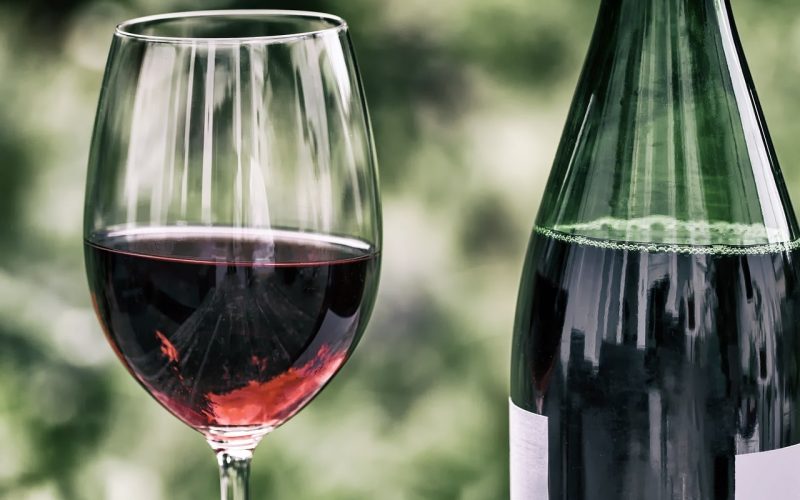As you sit back and enjoy a glass of red wine, you might be curious about the calorie content in your drink.
Understanding how many calories are in a glass of red wine can help you make informed choices and balance your calorie intake if you are watching your weight.
What Makes Up the Calories in Wine?
The calories in wine come primarily from alcohol and residual sugars.
Alcohol contributes to the majority of the calorie content, with each gram of alcohol providing about seven calories.
Residual sugars, which remain after the fermentation process, also add to the calorie count, although contributing around four calories per gram to a lesser extent.
| Source | Calories per Gram |
|---|---|
| Alcohol | 7 |
| Residual Sugars | 4 |
To learn more about calorie counting and how it can help you manage your dietary intake, you can visit our article on what is calorie counting.
How Serving Size Affects Calorie Count
The serving size significantly determines how many calories are in a glass of red wine.
A standard serving is generally considered to be 5 ounces (about 150 milliliters).
However, the size of your wine glass and how much you pour can significantly alter the number of calories you consume.
| Serving Size | Approximate Calories |
|---|---|
| 5 ounces (standard serving) | 125 |
| 6 ounces | 150 |
| 9 ounces (large glass) | 225 |
As you can see, a larger glass or a more generous pour can almost double the calorie content compared to a standard serving.
So, if you’re counting calories, it’s essential to consider the type of wine you’re drinking and the amount.
To explore the calorie content of other foods and beverages, check out our articles on how many calories in fried chicken, how many calories in pizza, or how many calories in rice.
Understanding Calories in Red Wine
One of the questions that often come to mind when you’re watching your calorie intake is, “How many calories are in a glass of red wine?“.
The answer to this question can vary depending on a range of factors.
General Calorie Count for a Glass of Red Wine
On average, a standard 5-ounce red wine, typically considered one serving, contains about 125 calories.
However, this can vary depending on the specific type of red wine and its sugar content.
| Type of Red Wine | Calories per 5-ounce Serving |
|---|---|
| Cabernet Sauvignon | 122 |
| Merlot | 120 |
| Pinot Noir | 121 |
| Syrah | 130 |
This calorie count is relatively low compared to other alcoholic beverages, but it’s still essential to account for these calories in your daily intake if you’re watching your weight.
For more information on the caloric content of various foods and drinks, check out our articles on how many calories in fried chicken or how many calories in rice.
Factors That Influence Calorie Count in Red Wine
The calorie count in a glass of red wine can be influenced by several factors, including:
- Alcohol content: Wines with a higher alcohol content typically contain more calories. For example, a glass of red wine with an alcohol content of 15% will have more calories than a glass with an alcohol content of 12%.
- Sugar content: Sweeter wines that contain more residual sugar also have a higher calorie count.
- Serving size: The size of your wine glass can significantly affect the number of calories you consume. A larger glass can hold more wine, which means more calories.
By understanding these factors, you can make more informed decisions about which wines to choose and how much to pour if you’re watching your calorie intake.
If you’re interested in learning more about calorie counting, check out our guide on what is calorie counting.
Remember, enjoying a glass of red wine can be a part of a balanced diet.
The key is to moderate your consumption and choose wines that align with your dietary goals. Cheers to mindful drinking!
Wine and Weight Management
When considering how many calories in a glass of red wine, it’s crucial to understand how alcohol affects your metabolism and overall weight management.
How Alcohol Affects Metabolism
When you consume alcohol, your body prioritizes metabolizing it over other nutrients like fats, proteins, and carbohydrates.
This is because your body treats alcohol like a toxin and seeks to remove it as quickly as possible.
Consequently, this process can slow down the burning of calories from other sources and may lead to weight gain if not managed properly.
In addition, alcohol can stimulate your appetite, potentially leading to overeating and further calorie intake.
While a glass of red wine may seem innocent, it’s important to consider these factors as you plan your diet and weight management strategies.
Balancing Wine Consumption with a Healthy Diet
If you’re a wine lover and calorie counter, the good news is that you don’t have to give up your favorite drink entirely.
The key is balance and moderation. Remember, one glass of red wine can contain anywhere from 100 to 150 calories, so it’s important to factor this into your daily caloric intake.
Opt for nutritious, low-calorie foods to balance out the calories from your wine.
For instance, if you know you’ll be having a glass of red wine with dinner, choose lean proteins, like grilled chicken, and vegetables for your meal.
This can help keep your calorie intake in check while allowing occasional indulgence.
It’s also worth noting that drinking a glass of water for every glass of wine can help keep you hydrated and potentially curb overeating by helping you feel full.
Lastly, exercise plays a crucial role in maintaining a healthy weight. Regular physical activity can help burn off the extra calories from your glass of red wine.
Remember, everyone’s body responds differently to alcohol, and what works for one person might not work for another.
It’s always a good idea to consult with a healthcare professional or a dietitian if you’re unsure about how to balance alcohol consumption with your weight management goals.
Now that you know how many calories in a glass of red wine, you can make informed decisions about your wine consumption.
Enjoy your wine, but remember to do so in moderation as part of a balanced diet.
Tips for Calorie-Conscious Wine Drinking
If you’re keeping track of your daily calorie intake, don’t worry. You can still enjoy a glass of red wine without derailing your diet.
Here are some tips to help you select lower-calorie red wines and strategies for mindful drinking.
Choosing Lower-Calorie Red Wines
The calorie content of red wine can vary depending on factors such as grape variety, alcohol content, and residual sugar.
Generally, dry red wines with lower alcohol content tend to be lower in calories.
For example, a dry red wine with an alcohol content of 12% may contain around 110-120 calories per 5-ounce serving.
Here’s a general breakdown of calories in different types of red wine:
| Wine Type | Alcohol Percentage | Calories per 5-ounce Serving |
|---|---|---|
| Light-bodied Red Wine | 12% | 110-120 |
| Medium-bodied Red Wine | 13-14% | 120-130 |
| Full-bodied Red Wine | 15% or more | 130-150 |
Remember, these are approximations, and actual calories may vary.
For a more comprehensive guide on the calories in different types of wine, check out our article on how many calories in wine.
Mindful Drinking Strategies for Calorie Counters
Mindful drinking is about paying attention to what and how much you’re drinking.
Here are a few strategies to help you keep your calorie intake in check while enjoying your favorite red wine:
1. Measure Your Serving: A standard serving of wine is 5 ounces. However, it can be easy to pour more than this, especially when you’re pouring into a large wine glass.
Try measuring out your serving to ensure you’re not accidentally doubling your calorie intake.
2. Savor Each Sip: Take your time and savor each sip of your wine. This not only enhances your enjoyment of the wine, but also allows you to drink less overall.
3. Alternate with Water: Having a glass of water in between wine servings can help reduce your overall calorie intake. Plus, it helps to keep you hydrated!
4. Avoid Late-Night Drinking: Your metabolism slows down at night, meaning the calories you consume late at night are more likely to be stored as fat. Try to avoid late-night drinking to help manage your calorie intake.
Remember, it’s not just about counting calories—it’s about enjoying your wine while also staying mindful of your overall health and well-being.
For more information about calorie counting, check out our article on what is calorie counting.
Myths and Misconceptions
A few myths and misconceptions have taken root in the world of wine drinking, especially when you’re counting calories.
Let’s debunk two of the most common ones: The “French Paradox” and The “Resveratrol Myth.”
The “French Paradox”
The “French Paradox” is a term that’s been coined to describe the seemingly contradictory fact that French people, despite consuming diets high in saturated fats, have relatively low rates of heart disease.
This has been attributed, in part, to their regular consumption of red wine.
However, it’s important to remember that many factors contribute to a person’s overall health, not just their diet.
Lifestyle factors such as exercise, stress levels, and smoking habits also play a significant role.
Therefore, while enjoying a glass of red wine might be part of a balanced lifestyle, it’s not a magic bullet for heart health.
The “Resveratrol Myth”
Resveratrol is a compound found in red wine that has been linked to a variety of health benefits, including heart health and longevity.
This has led to the misconception that drinking red wine is a shortcut to good health.
While resveratrol has potential health benefits, the amount in a glass of red wine is quite small.
To gain significant amounts of resveratrol, you would need to consume an impractical amount of red wine, which would far outweigh any potential benefits.
Remember, while a glass of red wine can be a part of a balanced diet, it’s not a substitute for a healthy lifestyle.
Maintaining a balanced diet, engaging in regular physical activity, and monitoring your caloric intake is important.
If you’re curious about what constitutes a serving of wine or how many calories are in a glass, refer to our article on how many calories in a glass of red wine.
In conclusion, while enjoying a glass of red wine can certainly be a part of a balanced lifestyle, it’s important not to buy into the myths.
Make informed decisions about your wine consumption based on factual information, not misconceptions. After all, knowledge is power, especially when you’re counting calories!








